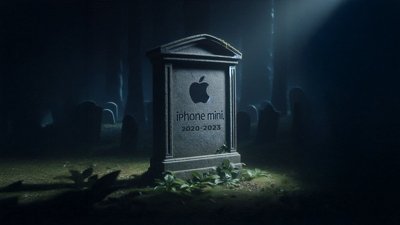The purpose of Apple's maps.apple.com domain is explained in OS X Mavericks as being a way to share maps with other users, whether they have access to Apple Maps or not, rather than pointing to a standalone web service.
Source: Apple
Last fall, AppleInsider reader Feynman noted that Apple had registered maps.apple.com as a URL that, in iOS 6, opened by default in Apple's new Maps app rather than Safari.
The URL domain was later noted to be in use in the new iOS 6 Maps app to share a location via email, iMessage Twitter or Facebook. Opened by an iOS 6 device, the URL resolves to open Maps, but when users on other platforms attempt to open a maps.apple.com URL, it is resolved by Apple to URL coordinates that point to Google Maps, allowing other users to see the map in their browser.
In OS X Mavericks, Apple has added its own native Mac Maps client, which uses the same sharing options as iOS 6 Maps while also adding new support for AirDrop.
When you share a location to email, for example, Maps creates a new message (depicted above) with an maps.apple.com URL, a standard .vcf that can be opened by Contacts (below) or any other standards-based contacts app, and an image of the location being viewed.
With a native Mac app, it makes even more sense for Apple to use its own URL domain. Just as with iOS 6, OS X Mavericks opens a shared location in the form of a maps.apple.com URL in Maps, but when users outside the Apple ecosystem try to look up the URL, Apple redirects them to coordinates in Google Maps that work in any web browser.
Why Apple isn't in the browser maps business
Earlier speculation suggested that Apple might seek to open its own HTML-based Maps website, making its custom maps, search and directions available to any browser-connected user, just as both Google and Nokia do, among others.
However, in order to reach the majority of web users, Apple would need to simplify its Maps offerings the way Google and Nokia do in their basic maps. For their more advanced 3D offerings, the two companies must either use a web plugin (as Nokia does) or only support specific browsers (as Google does for its advanced WebGL maps project, which only works in Chrome or Firefox).
Instead, Apple had exclusively targeted only its own native iOS and OS X clients, with no web interface. That allows to to focus entirely upon providing a native experience, rather than adapting its maps to work on the web. Reaching the masses has been delegated to Google Maps.
Compared to a web based offering, Apple's native Mac app allows for much faster performance, supports familiar multitouch gestures like pinch to zoom, directly integrates with Contacts, syncs location Bookmarks with iCloud and can share locations and directions using standard Share Sheets via email, iMessage, nearby users with AirDrop or to Twitter and Facebook.
In order to compete against Apple Maps on iOS and OS X, Google and Nokia are both using web-only tools for the Mac, and only Google offers a truly native iOS app. Nokia Now for iOS basically wraps a less sophisticated web view.
Apple's strategy also simplifies its third party development APIs for Maps, as it can focus entirely on Cocoa developers without also building a web-based API as Google and Nokia have. This focus has allowed Apple to catch up with the larger map players, both of which had native clients for their own Android and Windows Mobile platforms before Apple.
In just its first year, Apple has been able to rapidly deploy advanced, vector based maps and 3D satellite images on both its desktop and mobile platforms, and allow its iOS and OS X app developers to leverage its map service in their own apps.
 Daniel Eran Dilger
Daniel Eran Dilger











-m.jpg)






 Andrew O'Hara
Andrew O'Hara
 Amber Neely
Amber Neely
 William Gallagher
William Gallagher
 Christine McKee
Christine McKee
 Andrew Orr
Andrew Orr

 Sponsored Content
Sponsored Content









21 Comments
I really think they should expand Maps to iCloud (the web interface) with an HTML 5 implementation (i.e., no plugins required, just a modern browser). That way Windows users with iCloud accounts have access to same mapping data they have on their iOS devices.
Though, they'll have to go "open web" at maps.apple.com, I think, if Google decides it would rather stick it to Apple and users than get the traffic Apple is directing their way.
Which means we still need a stand alone Maps on the Web. Geez, they ported Pages to HTLM5, but not Maps?!
I really think they should expand Maps to iCloud (the web interface) with an HTML 5 implementation (i.e., no plugins required, just a modern browser). That way Windows users with iCloud accounts have access to same mapping data they have on their iOS devices.
Though, they'll have to go "open web" at maps.apple.com, I think, if Google decides it would rather stick it to Apple and users than get the traffic Apple is directing their way.
There's a reason why the new Google Maps requires a special browser to do 3D, and even then is quite limited. Also, the UI for web browsers has to be simpler. You can't capture various gestures. The web and native development aren't equal, or ChromeOS would be doing well.
Apple has done rich app development in HTML5: the new iWorks for iCloud shows that. But there, Apple is spreading the legitimacy of iWork files and opening up more flexible doc editing options. There's not equivalent to reverting to Google Maps in that category. But for Maps? Why not use Google to service Windows users? It worked pretty well for expanding WebKit at the expense of IE.
This is exactly the kind of integration between OS X and iOS that will lead to a lot more cool stuff in the future. Google and Microsoft are hardly friends so they will never have this level of integration between Windows and Android. Apple will have the iPhone, iPod, iPad, Apple TV and Macs all working beautifully together. Messages in mountain lion was just a small taste as is maps and airplay. There is still a lot more integration and synergy between Macs and iOS devices that can and will occur. All of the pieces of the puzzle are finally starting to fall into place.
Really?!?! appleinsider@gmail.com!!! Edit: I just want to be clear that just because I obviously don't use Google products doesn't mean that no one should, but for heavens sake you're an Apple website!?